The artist shows how these 10 famous historical and mythical monuments would look like today if they survived
Categories: Art | Culture | Design and Architecture | History | Photo project | Society | World
By Vika https://pictolic.com/article/the-artist-shows-how-these-10-famous-historical-and-mythical-monuments-would-look-like-today-if-they-survived.htmlOne of the most interesting things about learning history is learning about the wonderful things created by our ancestors. But it can be frustrating not to see them. One picture, as they say, is worth a thousand words; and, although many things have been written about these amazing historical monuments, not everyone can imagine what they might look like in reality. But some artists actually make an effort to recreate history in the form of an image and not only that, they bring this long-lost past into the present and try to imagine what it would look like if it had survived to this day.
Digital artist and graphic designer Yevgeny Kazantsev was tasked with creating an insurance commercial. He decided to look at an alternative universe, where ancient wonders of the world and other fantastic structures survived as if to say: "This could survive if they only knew about insurance." Eugene staged and recreated these designs taking into account the modern background. The project was a success, and the result went beyond the commercial environment and could also be appreciated for its artistic merit.
10 PHOTOS
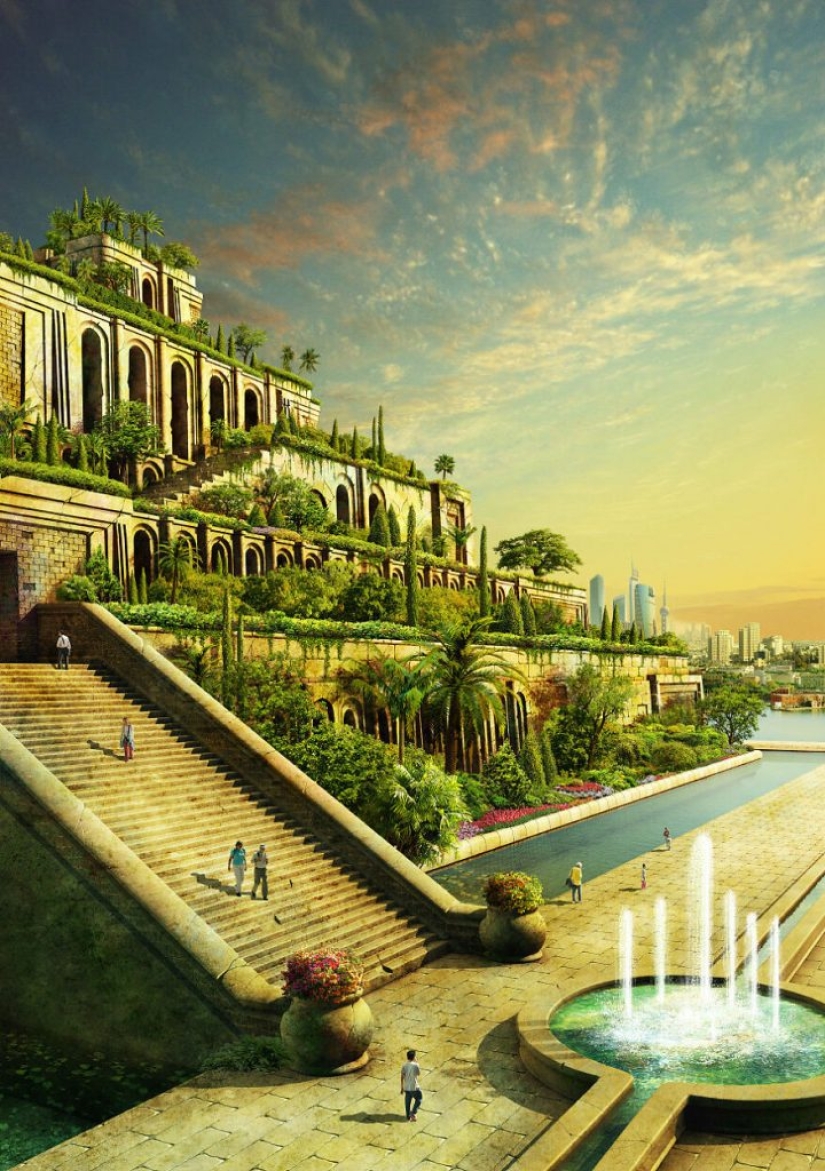
1. Hanging Gardens of Babylon.
The Hanging Gardens of Babylon were one of the seven wonders of the ancient world. This is the only one of the seven wonders of the world, the location of which is not precisely determined. According to one legend, the Gardens were built next to the palace known as the "Miracle of Humanity" by King Nebuchadnezzar II (c. 605 and 562 BC) for his Median wife, Queen Amitis, who missed the green hills of her home. The gardens are described as an example of ingenuity, engineering, and beauty, which looks like a multi-tiered green hill with many terraces, in which many plants grow, such as shrubs, trees, and flowers.
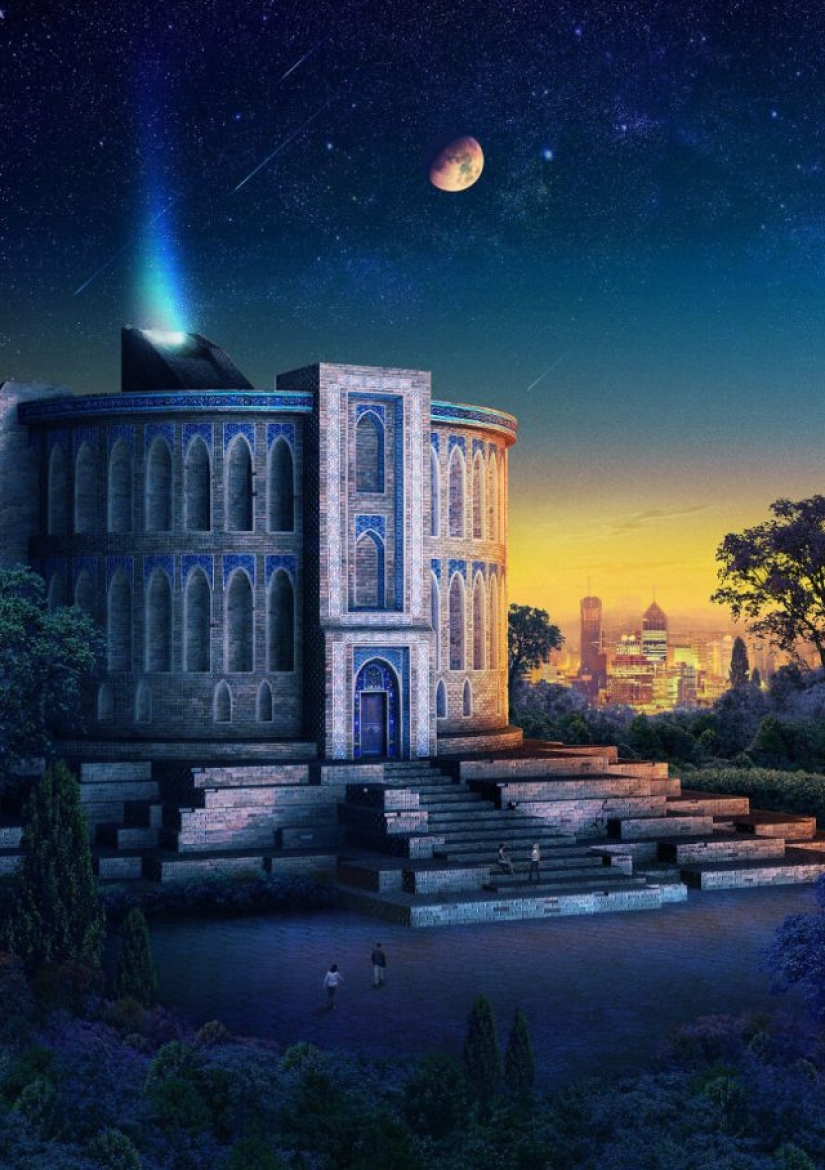
2. Observatory Takkyubin in Constantinople.
Built by Taqi ad-Din Muhammad ibn Maruf in 1577, the Constantinople Observatory Takkubin (Taqi ad-Din) was one of the largest astronomical observatories in the medieval world. However, its fame was not supposed to last long and it was destroyed in 1580, just three years after it was built because it was used not only for astronomy but also for astrology, a form of divination prohibited by Sharia law.
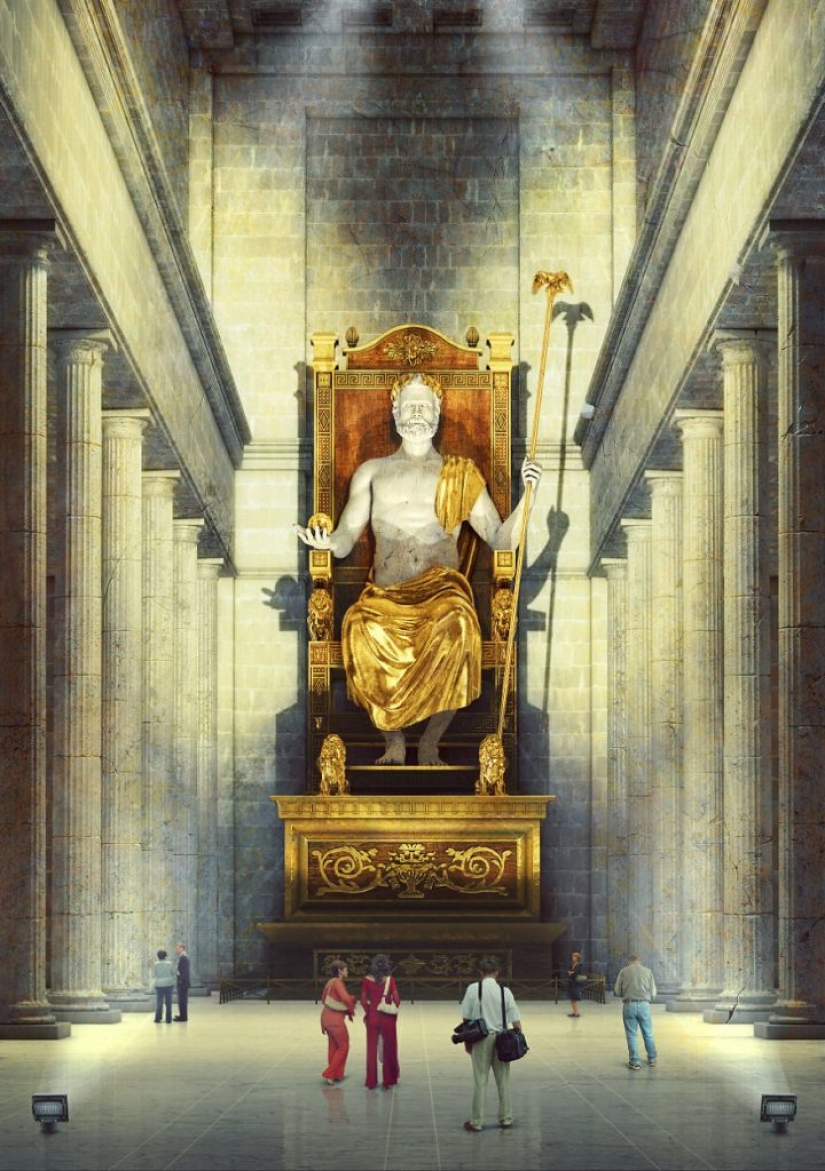
3. Statue of Zeus at Olympia.
The statue of Zeus at Olympia was a giant seated figure of Zeus, king of the gods of Olympus, about 12 meters high, made by the Greek sculptor Phidias around 435 BC. in Olympia, Greece. The statue was commissioned by the Eleans, the hosts of the Olympic Games, who wanted to compete with Athenian culture. The frame of the statue was wooden, decorated with plates of ivory and gold.

4. Colossus of Rhodes.
The Colossus of Rhodes was a statue built to commemorate the successful defense of the city of Rhodes from the year-long siege of Demetrius Poliokret. The tallest ancient statue with a height of about 33 meters is considered one of the seven wonders of the ancient world. However, it did not last long: built by Hares of Lindos in 280 BC, the colossus lasted only 54 years and collapsed during an earthquake in 226 BC. According to a certain oracle, the Rhodians no longer built it. In the 21st century, there have been proposals to build a new Colossus in the harbor of Rhodes, and in 2015 some architects have proposed a promising project, although some scholars have criticized the site, arguing that it could not have been the original site.
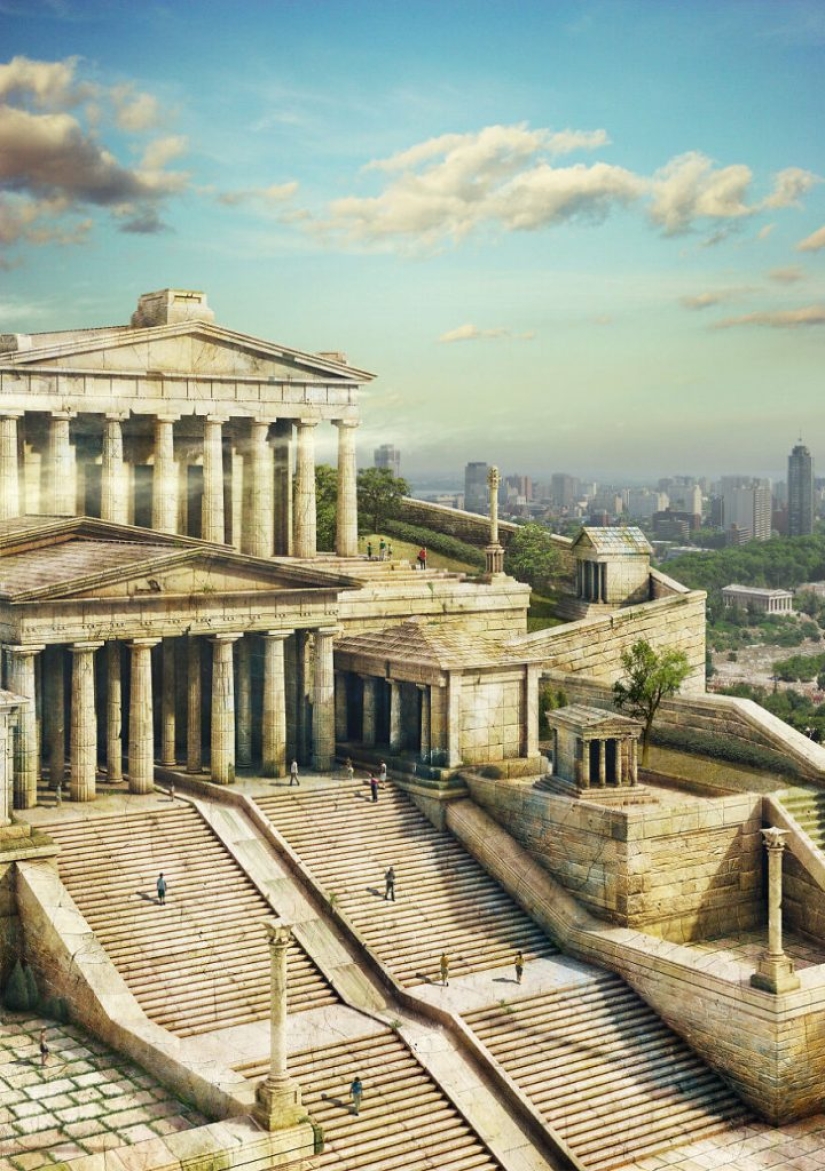
5. The Acropolis of Athens.
The Acropolis of Athens is an ancient citadel built on a rocky hill overlooking the city of Athens. The Acropolis of Athens is a gigantic ensemble of buildings, the most famous of which is the Parthenon. To this day, only a few significant old buildings have survived from the citadel. Pericles, a renowned historical figure, coordinated the construction of buildings considered to be the most important, such as the Parthenon, Propylaea, Erechtheion, and the Temple of Athena Nike. The Parthenon and other buildings were severely damaged during a siege by the Venetians in 1687 when they hit a powder store in the Parthenon with a cannonball and it exploded.
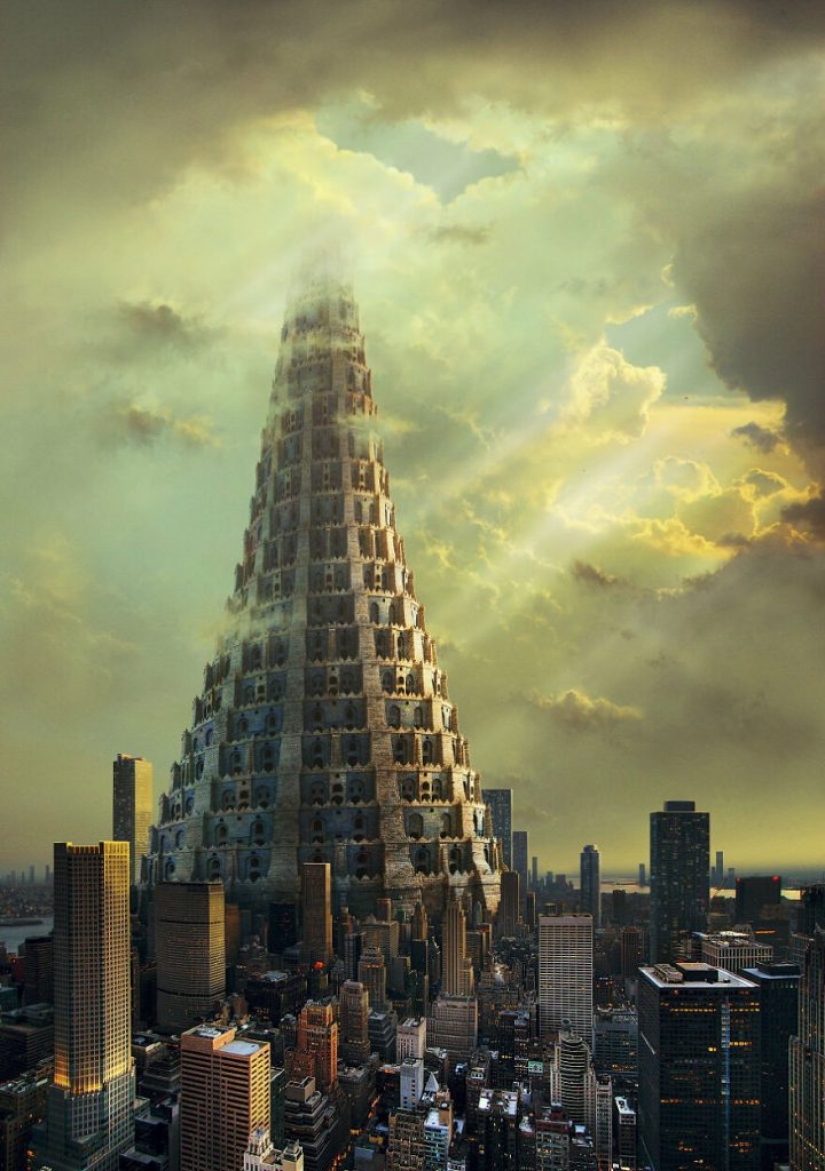
6. The Tower of Babel.
The Tower of Babel is a mythical structure mentioned in Genesis in the Old Testament. It is an origins myth designed to explain why people speak different languages. Although many consider the Tower of Babel to be a fictional structure, some scholars associate it with famous structures in Babylon and Sumer.

7. Great Sphinx of Giza.
It is believed that the Great Sphinx of Giza was built by the Egyptians of the Old Kingdom during the reign of Khafre (c. 2558–2532 BC), whose face he apparently depicts. It is made of limestone and carved out of rock. With a length of 73 matras from paw to tail and a height of 20 meters, it is the oldest known monumental sculpture in Egypt and one of the most famous statues in the entire world.
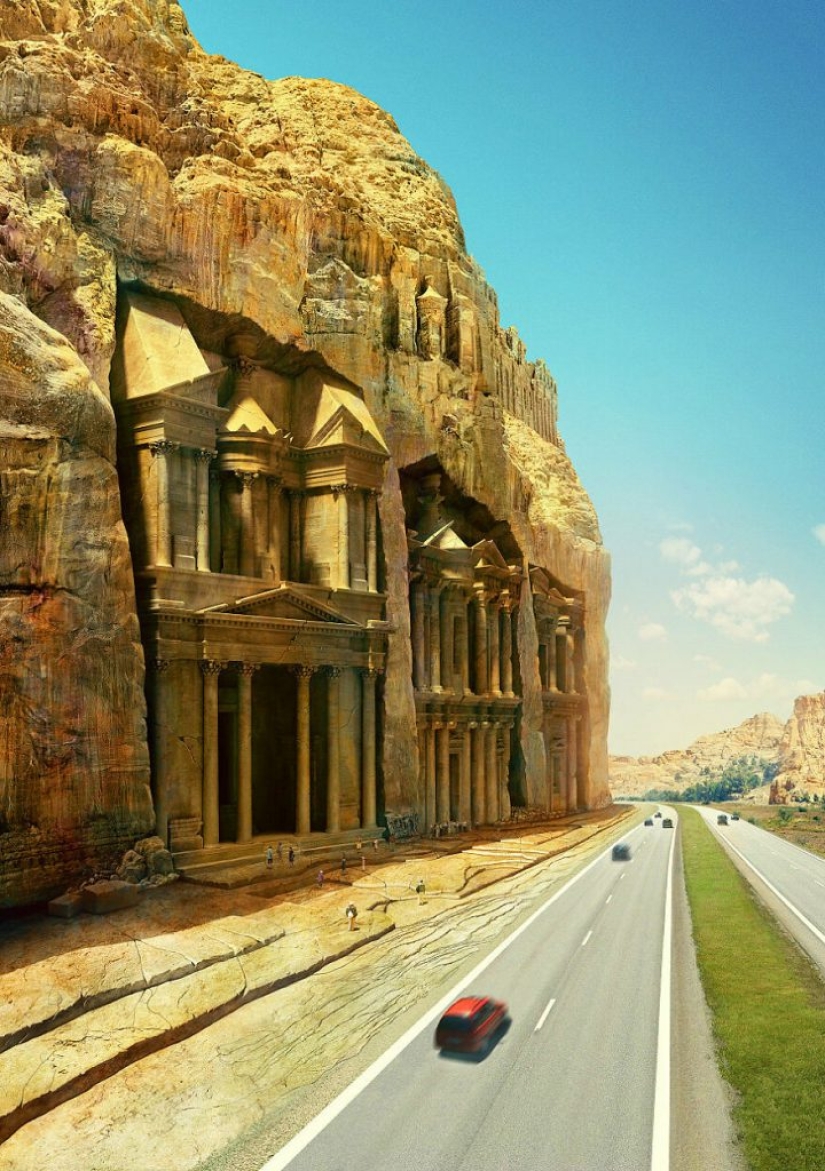
8. The great temple in Petra.
The Great Temple at Petra was a colossal complex built around the first century AD under the rule of the Nabatean king Aretus IV. It is unclear whether the building was intended for religious or administrative purposes, and if it was religious it remains unclear for which deity it was built. The vast ensemble of buildings covers about 7,556 square meters and is well preserved compared to other monuments on this list.
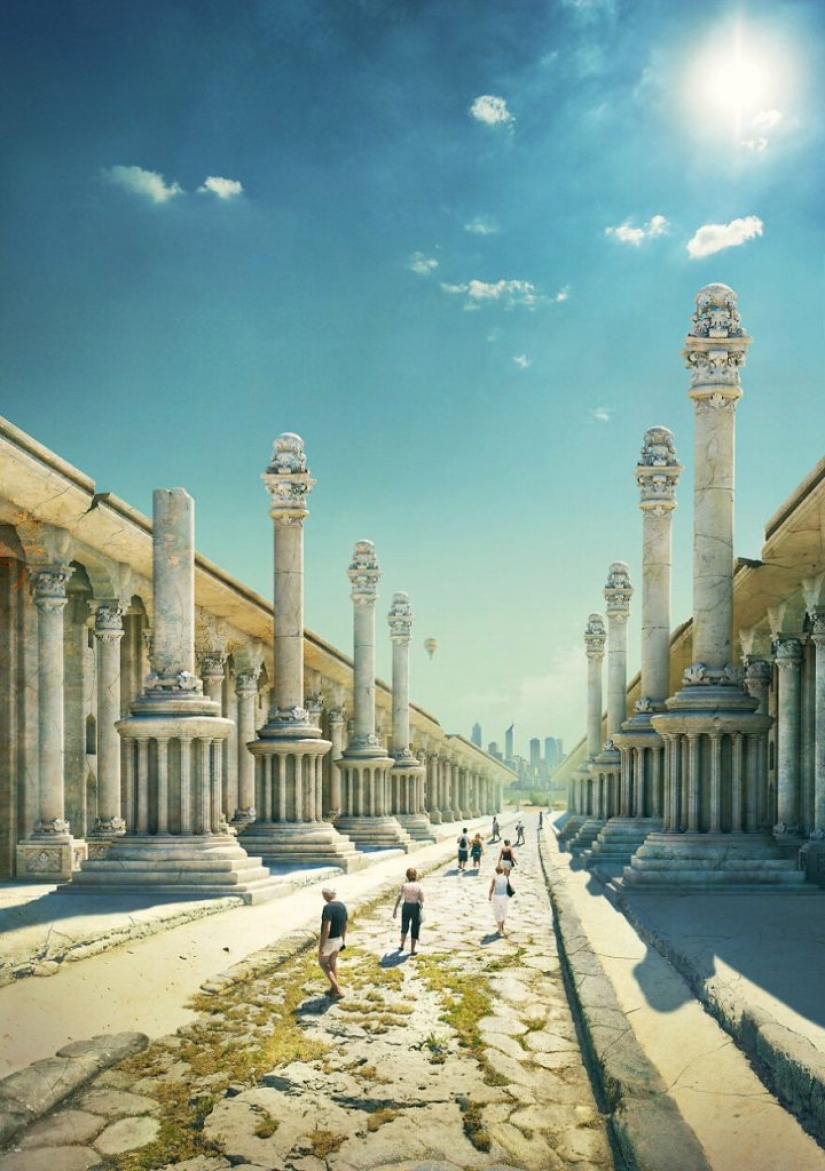
9. Temple of Artemis.
The Temple of Artemis was dedicated to Artemis (the Roman equivalent was Diana), the Greek goddess of the hunt, wildlife, wild animals, the moon, and chastity, sister of Apollo. The temple located in Ephesus was completely rebuilt twice: once after a flood, and another after an arson. By 401 AD, it was completely destroyed, and only fragments and foundations of the last temple remained.
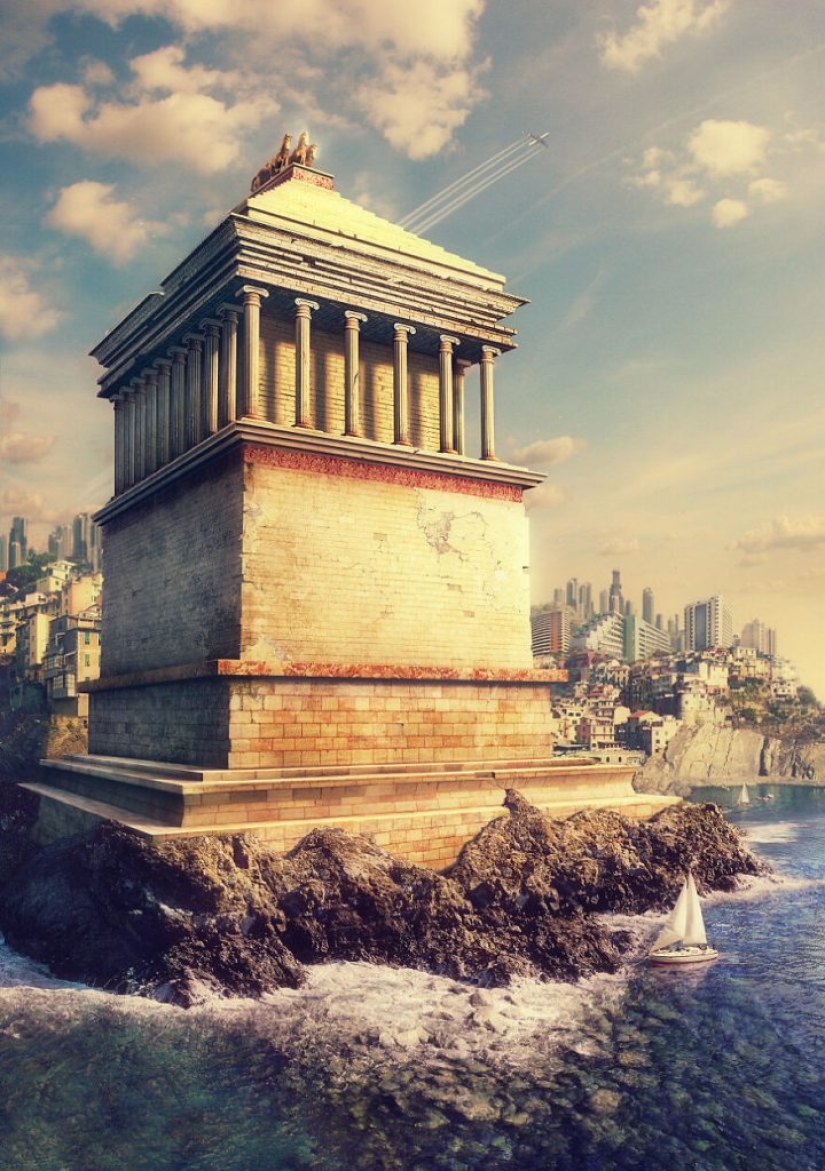
10. Mausoleum at Halicarnassus.
Built between 353 and 350 BC, the Mausoleum at Halicarnassus was the tomb of the Anatolian ruler of Caria Mavsol and his wife Artemisia II. The structure was about 45 meters high and each side was decorated with sculptural reliefs created by prominent Greek sculptors. Although the word "mausoleum" originally refers to the tomb of Mausolus, the word itself has come to be associated with any kind of aboveground tomb.
Keywords: Artist | History | Mythical monuments | World | Design | Arhcitecture
Post News ArticleRecent articles
In 1971, Francis Ford Coppola began his work on one of the best films in the history of cinema — "The Godfather". 37-year-old ...

Despite the fact that we want to have every day, and so do many most of the time spend at the stove, good cooks be the only one. ...
Related articles

Wreaths of flowers are kept at the height of fashion for several years already. Girls wear them to weddings, holidays and ...

University Professor bill Podlich from Arizona has made a series of pictures in 1967, while he lived and worked in Afghanistan with ...

In 1985, the Moscow publishing house "Soviet Russia" released a large album called "Volgograd", collecting the works of five Soviet ...

In the hustle and bustle of everyday life we often do not notice such details as the light patina of dust, barely noticeable stain ...